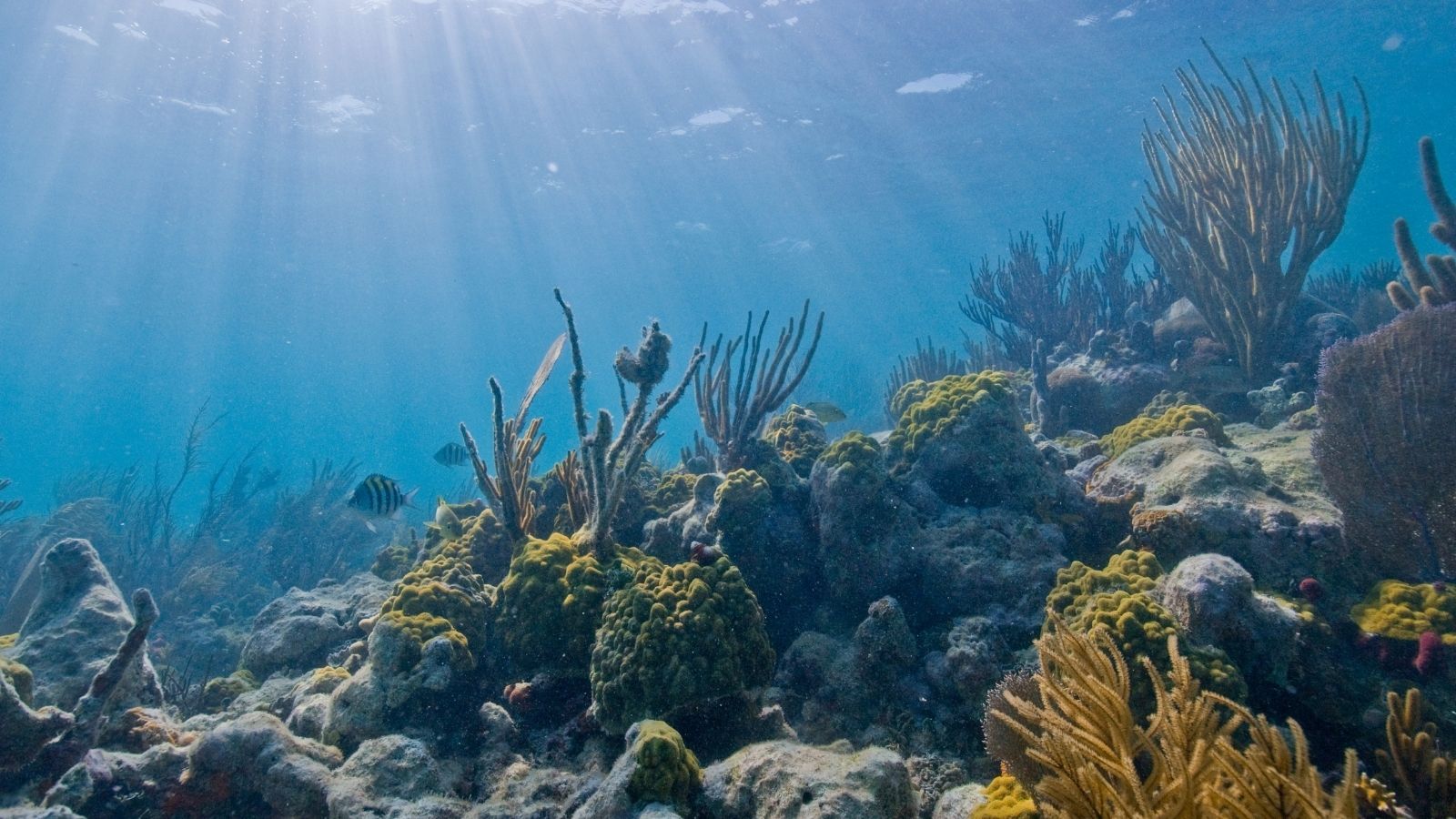
Small wonders: Edmonds Underwater Park in Washington
Even though the protected area is relatively small, numerous studies suggest that the protections have been remarkably successful.

This is a guest blog from James Horrox, which originally ran on www.frontiergroup.org. This is the sixth and last in a series of blogs about a report, New Life for the Ocean, which we co-authored with Frontier Group.
The large majority of the United States’ MPAs in near-shore waters are situated in the ocean off the Pacific Coast.1 Among the oldest of these lies off the eastern shore of Puget Sound, just north of the city of Edmonds in Washington state. A fully protected no-take zone, designated in 1970, Brackett’s Landing Shoreline Sanctuary covers less than half a square mile area of ocean, but within this tiny area lie a range of different habitats teeming with diverse marine life.2
A wide sand flat makes up the majority of the reserve’s subtidal habitat (the zone of shallow water extending about 200 meters from the low tide line), at the edge of which beds of eelgrass support a plethora of small fishes, including bay pipefish, juvenile codfishes and shiner perch. The sand and mud areas are home to flatfishes and salmon; tubesnouts and herring are common, as are marine mammals, including harbor seals and sea lions, and a rich variety of birdlife, including surf and white-winged scoters, red-breasted mergansers, various species of grebe, and seabirds like marbled murrelets.3 Divers in the area have even spotted the occasional grey whale.4
Much of the sanctuary, however, consists of an artificial habitat dominated by manmade features, including a sunken drydock, sunken boats, tires, concrete rubble, disused navigation buoys, and plastic pipes. This rather bleak-sounding underwater world is nonetheless a haven of biodiversity, with many of the submerged structures attracting species usually found in rocky habitats, including giant anemones, kelp greenling, painted greenling, surfperches, bladed kelp, bull kelp and black rockfish. The park also provides a refuge for certain species of fish, including, most notably, copper and quillback rockfish, lingcod and cabezon.5
This manmade reef falls within an area of the sanctuary known as Edmonds Underwater Park, just north of the Edmonds-Kingston Ferry Landing.6 Established by the City of Edmonds in 1970 as a marine preserve and sanctuary, Edmonds Underwater Park is one of 10 such parks that make up Washington’s underwater park system.7 The park is a popular scuba diving destination, and around half of it has been developed specifically for divers, with a network of guide ropes forming trails linking up the various submerged features.8 The area is protected by both the city and the Washington Department of Fish and Wildlife, which incorporated the no-take restriction into state fishing regulations.9 The taking of any fish or other marine life is strictly prohibited, as is the use of boats or other types of watercraft within 200 feet of its perimeter.10
Even though the protected area is relatively small, numerous studies carried out since the early 1990s suggest that the protections have been remarkably successful in providing a refuge for fish populations. Fish abundance in the area was low prior to the implementation of protections, and not significantly different from anywhere else in the surrounding region. Prior to 1970 the area was virtually barren of lingcod and rockfish, for example, but studies conducted in the 1990s indicate that these species rebounded after the implementation of protections.11 Surveys of fish populations conducted in 1993 and 1994 comparing Edmonds Underwater Park and another small protected zone with six nearby areas that allowed fishing found striking differences between the fished areas and the protected zones.12 At that point, Edmonds had had protections in place for almost two and a half decades, and it was here that the most striking differences were found, with populations of copper rockfish and lingcod inside the park in some cases almost 10 times those of populations in the unprotected zones.13
RELATED CONTENT
Subsequent research has found that the abundance of copper rockfish was 15 times higher in Edmonds than in areas of the Puget Sound with no restrictions in place.14 The average size of these fish was also much higher at Edmonds, where 85 percent of them were found to measure 40 centimeters or more – lengths rarely found in outside the park.15 Lingcod, too, were more than twice as abundant and significantly larger at Edmonds than in fished areas, with 95 percent measuring 70 cm or more.16 Again, fish of these lengths were relatively uncommon in fished areas.17
The size and age of rockfish within Edmonds Underwater Park suggest that these fish will have higher reproductive potential than those in surrounding unprotected areas. Large quillback rockfish of the sizes found at Edmonds can produce substantially more eggs than the smaller fish in the depleted areas, potentially making them an important source for larval transport to replenish populations outside the reserve.18 At Edmonds, rockfish reproduction potential has been found to exceed that of the average fished sites by a ratio of 55 to 1.19
The unusual artificial environment found at Edmonds Underwater Park provides good nesting and spawning habitat for lingcod and ideal conditions for juvenile rockfish to thrive.20 The extent to which both species seem to have benefited from the protections while populations in Puget Sound more broadly are in decline is a testament to the effectiveness of the protections. 21 Moreover, in the case of lingcod – an important predator in the Puget Sound marine ecosystem – their success is also an indicator of how this tiny protected area has contributed to the health of the ecosystem as a whole.22
Image: Cabezon at Edmonds Underwater Park, WA. Credit: Patrick Briggs via Flickr, CC BY 2.0.
- Margaret Cooney et al., Center for American Progress, How Marine Protected Areas Help Fisheries and Ocean Ecosystems, 3 June 2019, accessed 20 May 2020, archived at https://web.archive.org/web/20200701071603/https://www.americanprogress.org/issues/green/reports/2019/06/03/470585/marine-protected-areas-help-fisheries-ocean-ecosystems/.↩︎
- Marine Conservation Institute Marine Protection Atlas, Brackett’s Landing Shoreline Sanctuary Conservation Area, accessed 13 January 2021, archived at https://web.archive.org/web/20201031070945/https://mpatlas.org/zones/8983.↩︎
- Ibid.↩︎
- Marine Conservation Institute Atlas of Marine Protection, City of Edmonds Underwater Park, accessed 10 June 2020, archived at https://web.archive.org/web/20200710214329/http://www.mpatlas.org/mpa/sites/68808241/.↩︎
- Marine Conservation Institute Marine Protection Atlas, Brackett’s Landing Shoreline Sanctuary Conservation Area, accessed 13 January 2021, archived at https://web.archive.org/web/20201031070945/https://mpatlas.org/zones/8983.↩︎
- Marine Conservation Institute Atlas of Marine Protection, City of Edmonds Underwater Park, accessed 10 June 2020, archived at https://web.archive.org/web/20200710214329/http://www.mpatlas.org/mpa/sites/68808241/.↩︎
- City of Edmonds, Washington, Edmonds Underwater Park, accessed 13 January 2021, archived at https://web.archive.org/web/20210114000416/http://www.edmondswa.gov/edmonds-underwater-park-discovery.html.↩︎
- Marine Conservation Institute Atlas of Marine Protection, Brackett’s Landing Shoreline Sanctuary Conservation Area, accessed 10 June 2020, archived at https://web.archive.org/web/20200710221817/http://mpatlas.org/mpa/sites/8983/.↩︎
- Environmental Law Institute Ocean program, Washington, accessed 10 June 2020, archived at https://web.archive.org/web/20200710222117/http://eli-ocean.org/wp-content/blogs.dir/7/files/Washington.pdf.↩︎
- City of Edmonds Ordinance 5.32.070, available at https://www.codepublishing.com/WA/Edmonds/html/Edmonds05/Edmonds0532.html#5.32.070.↩︎
- Low populations prior to protections: Kirby W. Johnson, “Census of Lingcod Nesting in the Edmonds Underwater Park,” Puget Sound Research, 2001, Puget Sound Water Quality Action Team, Olympia, WA. See also Larry LeClair et al., Washington Department of Fish and Wildlife, Summary of Findings from Periodic Scuba Surveys of Bottomfish Conducted Over a Sixteen-Year Period at Six Nearshore Sites in Central Puget Sound, September 2018, 5, archived at https://web.archive.org/web/20210115034353/https://wdfw.wa.gov/publications/02026.↩︎
- Wayne Palsson et al., “The Response of Rocky Reef Fishes to Harvest Refugia in Puget Sound,” in Elizabeth Robichaud, ed., Puget Sound Research ‘95 Proceedings, Olympia, WA: Puget Sound Water Quality Authority, 1995, 224-234.↩︎
- Kate Wing, Natural Resources Defense Council, Keeping Oceans Wild: How Marine Reserves Protect Our Living Seas, 2001, 12-13, archived at https://web.archive.org/web/20180727022427/https://www.nrdc.org/sites/default/files/kow.pdf.↩︎
- Alaska Department of Fish and Game Marine Protected Areas Task Force, Marine Protected Areas in Alaska: Recommendations for a Public Process, July 2002, archived at https://web.archive.org/web/20200706225741/https://www.adfg.alaska.gov/static/lands/protectedareas/pdfs/5j02-08.pdf, 55.↩︎
- Wayne A. Palsson, “The Development of Criteria for Establishing and Monitoring No-take Refuges for Rockfishes and Other Rocky Habitat Fishes in Puget Sound,” Puget Sound Research, 2001, 6, available at https://pdfs.semanticscholar.org/b388/09adc238f2fdf3d4712ade12de47075040c2.pdf?_ga=2.206436115.1436537532.1594420808-1970200413.1588695890.↩︎
- Ibid.↩︎
- Ibid.↩︎
- Kate Wing, Natural Resources Defense Council, Keeping Oceans Wild: How Marine Reserves Protect Our Living Seas, 2001, 13, archived at https://web.archive.org/web/20180727022427/https://www.nrdc.org/sites/default/files/kow.pdf, 12. Stephanie L. Sparks, Marine Protected Areas in the Puget Sound: Can a Network Design of MPA’s Offer Greater Protection Than Isolated Reserves for Critical Rockfish Populations? Master’s Thesis, The Evergreen State College, 2010, 23, archived at https://web.archive.org/web/20151002091335/http://archives.evergreen.edu/masterstheses/Accession86-10MES/Sparks_SMESThesis%202010.pdf.↩︎
- Ibid.↩︎
- Lingcod.org, Edmonds Underwater Park Overview, accessed 10 June 2020, archived at https://web.archive.org/web/20200710225941/http://www.lingcod.org/Edmonds-Underwater-Park.htm.↩︎
- Ibid.↩︎
- Lingcod.org, Edmonds Underwater Park Lingcod Nest Census: Overview, accessed 10 June 2020, archived at https://web.archive.org/web/20160807004705/http://lingcod.org/Lingcod-Nest-Census-Overview.htm.↩︎
Topics
Authors
Steve Blackledge
Senior Director, Conservation America Campaign, Environment America Research & Policy Center
Started on staff: 1991 B.A., Wartburg College Steve directs Environment America’s efforts to protect our public lands and waters and the species that depend on them. He led our successful campaign to win full and permanent funding for our nation’s best conservation and recreation program, the Land and Water Conservation Fund. He previously oversaw U.S. PIRG’s public health campaigns. Steve lives in Sacramento, California, with his family, where he enjoys biking and exploring Northern California.
Find Out More

A wave of youth ocean activism in Boston

Save the Whales

Can sea otters help with invasive species?




